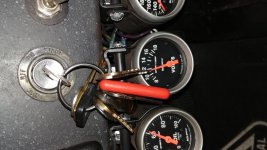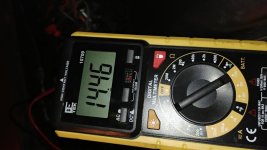bronconut73
Bronco Guru
- Joined
- Aug 7, 2012
- Messages
- 9,916
My Autometer volt gauge is sitting at 12 volts with the engine running. When I turn on electric fans, wipers, etc...it dips a little near 11 volts.
Never worried too much about it because while using my volt meter on the battery I noticed that while running it is at 14.4 volts. Alternator is working quite well.
Shouldn't my Autometer volt gauge reflect that 14.4 volts noted at the battery with the engine running?
Never worried too much about it because while using my volt meter on the battery I noticed that while running it is at 14.4 volts. Alternator is working quite well.
Shouldn't my Autometer volt gauge reflect that 14.4 volts noted at the battery with the engine running?












